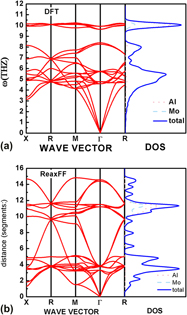Crossref Citations
This article has been cited by the following publications. This list is generated based on data provided by
Crossref.
Zhou, Su
Pei, Fenglai
and
De Lile, Jeffrey
2015.
Electrochemical Polymer Electrolyte Membranes.
p.
539.
Song, Wen-Xiong
and
Zhao, Shi-Jin
2015.
Effects of partitioned enthalpy of mixing on glass-forming ability.
The Journal of Chemical Physics,
Vol. 142,
Issue. 14,
Cowen, Benjamin J.
and
El-Genk, Mohamed S.
2016.
Bond-order reactive force fields for molecular dynamics simulations of crystalline silica.
Computational Materials Science,
Vol. 111,
Issue. ,
p.
269.
Han, You
Jiang, Dandan
Zhang, Jinli
Li, Wei
Gan, Zhongxue
and
Gu, Junjie
2016.
Development, applications and challenges of ReaxFF reactive force field in molecular simulations.
Frontiers of Chemical Science and Engineering,
Vol. 10,
Issue. 1,
p.
16.
Pottel, Joshua
and
Moitessier, Nicolas
2016.
Reviews in Computational Chemistry.
Vol. 29,
Issue. ,
p.
152.
Pishehvarz, Giti
Erfan-Niya, Hamid
and
Zaminpayma, Esmaeil
2018.
The role of hydrogen bonding in interaction energy at the interface of conductive polymers and modified graphene-based nanosheets: A reactive molecular dynamics study.
Computational Materials Science,
Vol. 155,
Issue. ,
p.
499.
Kirchdoerfer, Trenton
and
Ortiz, Michael
2018.
Advances in Computational Plasticity.
Vol. 46,
Issue. ,
p.
165.
Smirnova, Daria
Starikov, Sergei
Leines, Grisell Díaz
Liang, Yanyan
Wang, Ning
Popov, Maxim N.
Abrikosov, Igor A.
Sangiovanni, Davide G.
Drautz, Ralf
and
Mrovec, Matous
2020.
Atomistic description of self-diffusion in molybdenum: A comparative theoretical study of non-Arrhenius behavior.
Physical Review Materials,
Vol. 4,
Issue. 1,
Du, Wan
Fan, Xue
Li, Hui
Zhai, Dong
and
Liu, Yi
2023.
Development of a Ni–Al reactive force field for Ni-based superalloy: revealing electrostatic effects on mechanical deformation.
Journal of Materials Research and Technology,
Vol. 24,
Issue. ,
p.
4454.
Yang, Liqiu
Nomura, Ken-ichi
Krishnamoorthy, Aravind
Linker, Thomas
Kalia, Rajiv K.
Nakano, Aiichiro
and
Vashishta, Priya
2024.
Surface Transfer Doping in MoO3–x/Hydrogenated Diamond Heterostructure.
The Journal of Physical Chemistry Letters,
Vol. 15,
Issue. 6,
p.
1579.
Chen, Jixing
Xu, Sen
Wang, Bo
Fan, Xiaofeng
Singh, David J.
and
Zheng, Weitao
2024.
Insights into the surface tension and superficial density peak of molten metals from molecular dynamics.
Acta Materialia,
Vol. 276,
Issue. ,
p.
120149.
Du, Wan
Fan, Xue
Xiao, Bin
Sun, Junxi
Wang, Qingqing
Tang, Yuchao
Zhang, Limin
Goddard, William A.
and
Liu, Yi
2025.
Re enhancement effects: Development of a ReaxFFNiAlRe reactive force field for Ni-based superalloys.
Acta Materialia,
Vol. 285,
Issue. ,
p.
120712.



